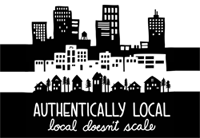Resident Ravenna Safety Girl, Shannon, has another emergency preparedness column for us this Tuesday. You may find it extremely relevant to your lives in the next couple days.
______________________
You’ve all now seen first-hand the organized, thoughtful way most Seattle residents respond to winter weather. Here are a few more things to keep in mind as you go through the next several days:
Before you go
Keep your gas tank full
A glance at the television shows you the importance of this one. In heavy winter weather, there is no way to know how long it will actually take you to get somewhere, so a full tank will give you peace of mind and get you home. It’s also important to keep your car full of gas when the temperature drops, as it will help prevent your gas line from freezing.
Carry a storm kit
Before leaving for a trip or even a long commute, equip your car with blankets, bottled water and food (a jar of peanut butter or a bag of trail mix is good), flares or a safety triangle, car charger, and anything else you think is necessary for your trip. Put it all in a cardboard box and drop it in the trunk, and you’re good for the winter.
Remember to include a sack or two of cat litter for traction. If you are skidding, dig out the area just in front of your tires and pour some litter there to help get out of a slick spot.
On the road
Chain up
If you have chains for your car, make sure you know how to use them… the side of the road in Snoqualmie Pass is not the ideal time to learn the quirks of your particular set of chains. When you go out to chain up, pull the passenger-side floor mat out of the car to kneel on as you work– much better than lying in the snow. Use cable ties to help secure the loose ends of your chains, especially if your set just has S-hooks at the end.
Remember, if your car is chained up it is NOT safe to drive over 30 miles per hour. You don’t want to drive faster than that anyway though; if you’re driving at near-highway speeds and one end of your chain comes unfastened, it will chew up 4+ inches of your car fender in seconds.
Drive safely
Use your noggin here… if it’s a steep hill, don’t drive down it. If local residents have blocked off a side street, assume they have a good reason for warning you away from it. Stick to arterials, and leave extra time to get to your destination. If you can avoid driving in to work, do so- it’s safer to be on a Metro bus or a train in winter weather.
Learn to steer out of a skid! Braking is what will get you in trouble on snow and ice. Road Trip America has more information about how to recover from a skid.
And, of course, if you can telecommute or take the day off, it’s safest to just stay home in snowy and icy conditions.
An aside about power outages
If you’re at home and your power goes out, turn off your main breaker until the power comes back on (you can tell by watching the streetlights). Especially around dinnertime or during chores, it’s hard to remember what was turned on and what was hot after the electricity has been off for several hours.
Many fires are started after power outages end because people forget that they were cooking, using irons or hair appliances, or doing other work when the electricity was cut off. If we’re in the middle of cooking dinner and the power goes out, what do we tend to do? Go out to eat! In the hustle to get oriented and find a place to go, many folks forget that they left the stove on and so come home to a fire afterward. Turning electricity off at the breaker during an outage will keep you out of this situation.
You can get more local information at takewinterbystorm.org (they have a mobile site as well) or @WinterByStorm. Stay safe out there!









These are great tips, thank you!
You’re welcome! I’ll be back next week.
Good advice! But I would appreciate Safety Girl’s tips on how to survive a more pressing potential emergency, re: The Zombie Apocalypse
I’ll write it if you’ll read it… careful what you wish for!